Hair Loss CondITIons & Disorders
What are the different conditions and disorders?
The treatment protocol for those with hair loss conditions and disorders is unique to each individual. Our virtual hair specialists will not diagnose any of these conditions or disorders, but they will collect your medical history and concerns and connect you with medical hair specialists who will identify the root cause and create a treatment protocol unique to your condition.
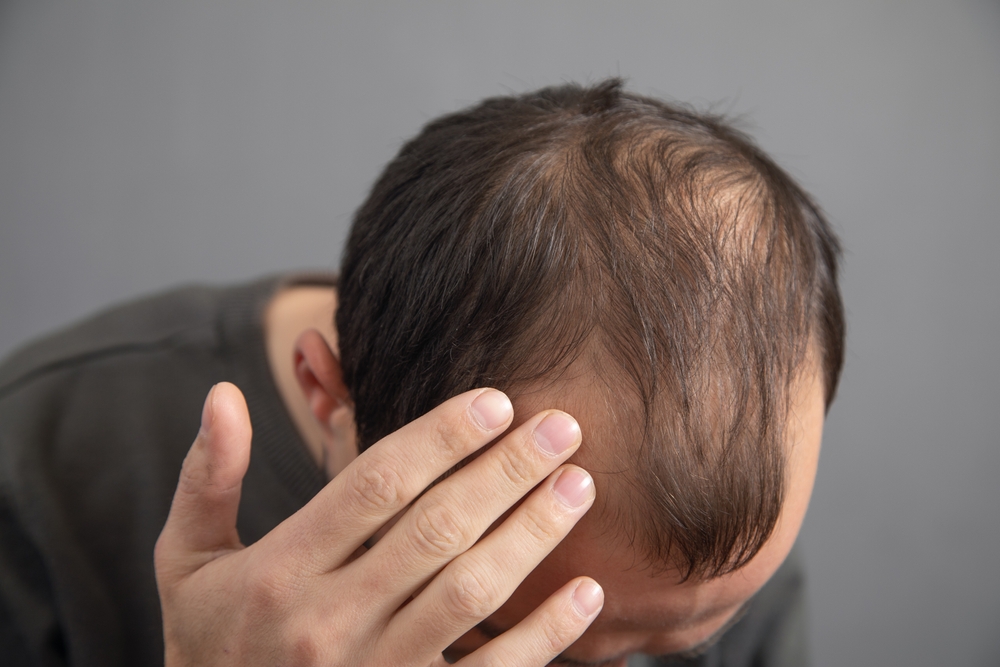
Male Pattern Alopecia
Male Pattern Baldness is a chronic progressive, non-scarring alopecia that typically presents with thinning of the frontal, temporal, vertex scalp, and deep recession of the frontal-temporal hairline. Hair thinning may progress to complete baldness in affected areas if left untreated. Male Pattern Alopecia is the most common hair loss disorder affecting all men. The exact cause of MPHL is unknown and is likely multifactorial and may possibly include genetic predisposition and follicular androgen sensitivity. Treatment for MPHL includes anti-androgen therapies (Finasteride), minoxidil, low level light therapy, PRP, growth factors and exosomes, scalp camouflage, essential oils, nutritional supplementation, and because of the MPHL pattern with the back of the head being resistant to hair loss, the FUE surgical hair restoration can be a wonderful permanent solution.
Telogen Effluvium
Telogen Effluvium is the most common cause of diffuse hair loss and shedding that affects both men and women. TE can be acute, lasting less than six months, and chronic, lasting six months or more. Telogen Effluvium occurs when an increased amount of anagen hairs in the growth phase are triggered to enter the telogen resting phase. Triggering factors include, but are not limited to, post-partum, febrile states, stress, medications, systemic disease, sudden and extreme weight loss, and nutritional deficiencies. Management of Telogen Effluvium includes watchful waiting, removing of triggering factors, nutritional supplementation, and minoxidil. In some cases, surgery may be appropriate.
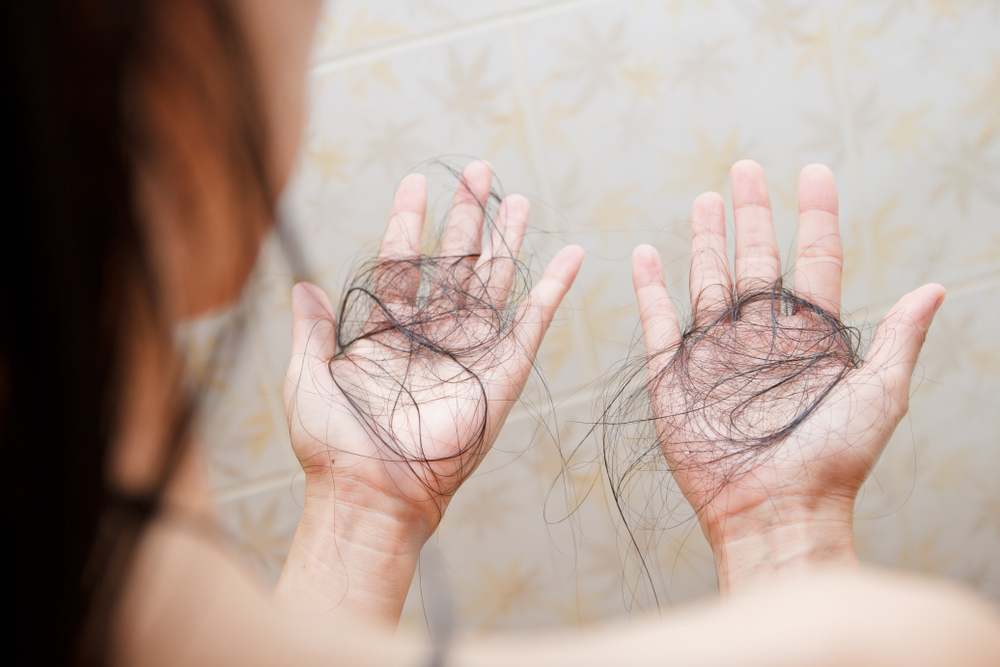

Traction Alopecia
Traction Alopecia is caused by excessive, frequent tension, leading to mechanical damage of the hair follicles. Traction Alopecia presents with inflammation and scarring of the scalp. In its early stages, Traction Alopecia is reversible and can present with bumps, “puss” bumps, mild thinning and hair breakage. In its late stages, it presents with scarred balding of the scalp. Traction Alopecia is one of the most common causes of hair loss in women of African descent. It may be managed by avoiding tension producing hairstyles (tight ponytails, extensions, braids, etc.) As with all hair loss, your solutions for intervention depends on your personal stage of loss. Some interventions if treated early enough could be steroids, minoxidil, PRP, exosomes, growth factors. If you are experiencing permanent loss, there is hope. Our team of experts at Hair Science Institute can explore scalp camouflage, and surgical hair restoration.
Alopecia Areata
Alopecia Areata affects approximately 2% of the population. Black and Hispanics demonstrated almost three-fold and two-fold increased odds of having AA, compared to Caucasians. AA presents with small patches (alopecia areata), band line hair loss on the hairline (ophiasis), widespread shedding (alopecia area incognito), total scalp hair loss (alopecia totalis), and total hair scalp and body hair loss (alopecia universalis). Alopecia Areata may be associated with other autoimmune diseases, such as thyroid disease. Nail changes (pitting) may be associated with a worse prognosis. Treatment of AA include steroids, anti-inflammatory oral and topical therapies, contact immunotherapy, minoxidil, platelet rich plasma, excimer laser, and surgical hair restoration. Though Alopecia Areata historically has been difficult to treat, recent development of innovative therapies are offering hope to those who once had very few options.


Female Pattern Alopecia
Female pattern alopecia, or Female Pattern Hair Loss, is a chronic, progressive, non-scarring alopecia. FPHL differs from male pattern hair loss and typically presents as a diffuse hair loss in the mid-frontal regions of the scalp with preservations of the frontal hairline. It is the most common hair loss disorder affecting women. The cause cause of FPHL is unknown but it is likely multifactorial and may include genetic predisposition, follicular androgen sensitivity, and microinflammation. Management of FPHL includes anti-androgen therapies (finasteride), minoxidil (oral/topical), low-level light therapy, platelet rich plasma, exosomes and growth factors, scalp camouflage (Scalp micropigmentation, hair fibers, wigs, etc.), essential oils (rosemary, etc.), nutritional supplementation, and hair transplantation.
Loose Anagen Syndrome
Loose Anagen Syndrome is a hair disorder in which the hair is “loose” and can be painlessly pulled from the scalp. There is no known cause of LAS. Patients present with disheveled hair that does not grow. LAS is classically described in young children, predominantly blonde females, though it can be present in adults as well. In rare cases LAS may affect the eyebrows. It may be mistaken for other hair loss conditions, including alopecia areata, telogen effluvium, trichotillomania. LAS is considered benign and generally resolves on its own. Patients with severe cases may be treated with medication, like minoxidil, to lengthen the duration in the anagen stage.


Acne Keloidalis Nucae
Acne Keloidalis Nuchae is a type of progressive scarring alopecia that presents with small, smooth firm bumps with occasional puss on the posterior scalp and nape of the neck. Lesions cause scarring hair loss and keloid scars. The cause for this type of hair loss has no known causes but it is suspected that it may be due to hair grooming, trauma, friction, heat, humidity, infection or androgen hormones. Treatment of this condition involves avoiding triggers, which include close shaving, frequent haircuts, shirts with high collars helmets, and chains and taking anti-inflammatories, antimicrobials, and in some cases, surgery.
Central Centrifugal Ciactricial Alopecia
Central Centrifugal Ciactricial Alopecia is a chronic, progressive inflammatory scarring alopecia that is the most common cause of scarring alopecia in women of African descent. This type of alopecia most often presents as hair loss that may start as breakage or change in hair texture on the central scalp and spread outward. CCCA may cause patchy hair loss or large areas of balding, and it may or may not be associated with itching, pain, and soreness. The exact cause of CCCA is unknown, but several ongoing studies have identified a gene variant of peptidly arginine deiminase 3, PADI3, present in approximately one-quarter of studies patients with CCCA. One study also demonstrated a 5-fold increase in the occurrence of uterine fibroids in women with CCCA. Treatment for CCA may be managed with anti-inflammatory medications (topical/oral/injections, minoxidil, avoidance of tension producing hairstyles, platelet rich plasma, growth factors, exomones, and hair transplantation.
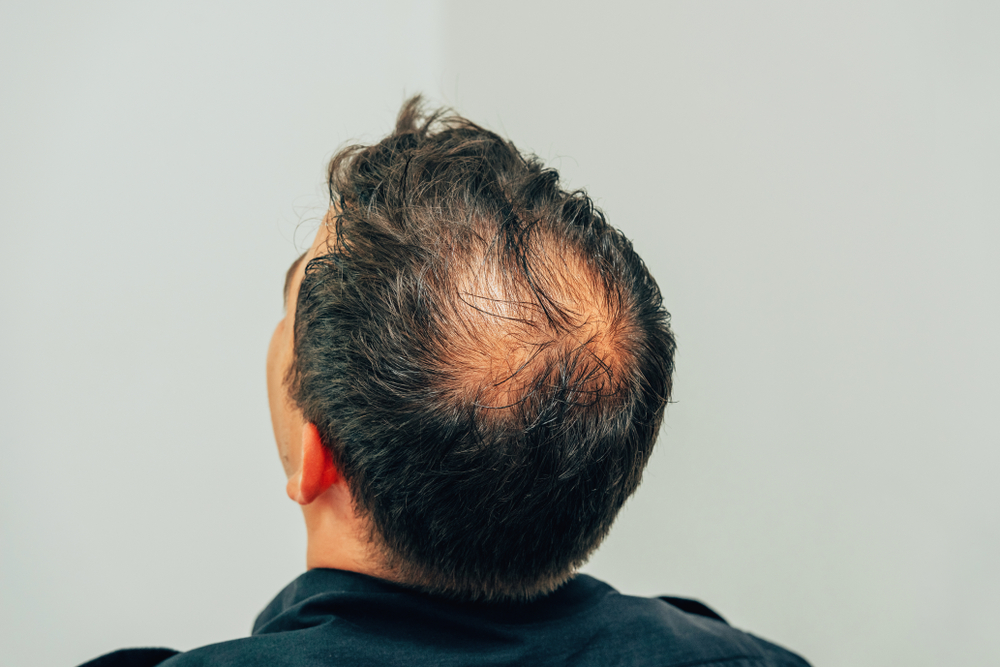

Source: Healthline
Discoid Lupus
Discoid Lupus is an inflammatory scarring alopecia cause by an autoimmune condition and is a type of chronic skin lupus. DLE is four to five times more common in black women compared to white women. Systemic lupus erythematosus (SLE) may develop in 5-25% of people with DLE and may be associated with other autoimmune conditions and in those at increased risk for squamous cell carcinoma. Discoid Lupus presents as a sharply-demarcated red, scaly plaque with a central depressed car, central skin lightening, follicle scalp plugs, and a surrounding dark patchy area. Treatment of DLE includes the use of sun protection, anti-inflammatory medications and steroids.
Dissecting Cellulitis
Dissecting cellulitis (DCSS), or Hoffman Disease, of the scalp is a rare skin condition that causes painful scarring and hair loss and may be due to inflammation of blocked hair follicles. Predominantly affecting men of African descent, DCS can affect anyone regardless of gender, race, or age. Early onset of symptoms include painful, pus-filled lumps and lesions, patches of hair loss, and secondary bacterial infections. Treatment is often multifactorial and may include oral and topical medications and antiseptic shampoos. Late stage progression of the disease present as lesions that ooze pus and bleed and wormlike tracts of skin between lesions. In late stage progression, permanent, irreversible hair loss is patchy and widespread.

Source: Wikipedia
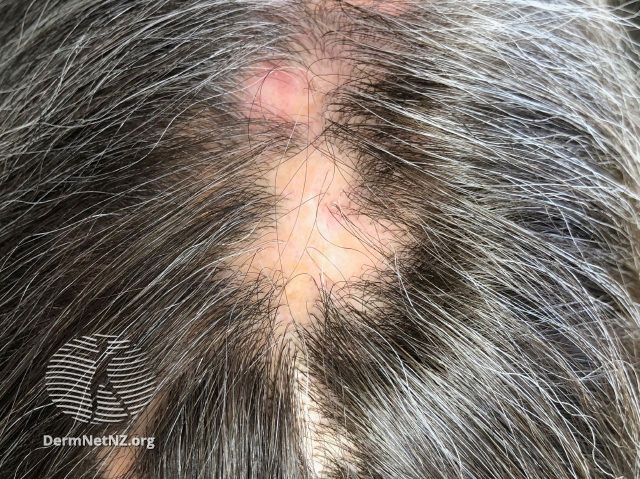
Lichen Planopilaris
Lichen Planopilaris is a chronic progressive primary lymphocytic scarring alopecia that presents with red, rough bumps, scales and pimples around the follicles, patchy thinning, and or complete balding. It may be associated with itching, burning, pain, and hair shedding. Lichen Planopilaris has two clinical types, frontal fibrosing alopecia and Graham-Little Syndrome. The exact cause of LPP is unknown, however some proposed mechanisms include autoimmune dysfunction, reduction in peroxisome proliferator-activated receptor gamma, genetic predisposition, and more recently interferon (IFN)-y dysfunction. It has been associated with thyroid disease, hirsutism. Treatment of LP may involve oral anti-inflammatory medications, steroids, PPAR-y modulated, μ-opiod receptor antagonists. Emerging therapies include Janus kinase inhibitors, and exosomes and growth factors, including PRP. Surgical hair restoration is only possible after the disease process has burned out and at least one year has lapsed.
Frontal Fibrosing Alopecia
Front Fibrosing Alopecia is a rare chronic progressive primary scarring alopecia. FFA is a clinical variant of lichen planopilaris that presents with the progressive recession/smooth balding of the frontal and temporal hairline. It can also be associated with eyebrow and body hair loss and facial bumps and dark marks. FFA is seen more commonly in postmenopausal Caucasian women. Upwards of 12% of FFA cases occur in women of African descent. The exact cause of FFA is unknown. However, some proposed mechanisms include genetic predisposition, autoimmune dysfunction, decreased levels of androgens, reduction in peroxisome proliferator-activated receptor gamma, and possibly environmental exposures.Management of FFA includes anti-androgen (finasteride), anti-inflammatories, minoxidil, retinoids, and scalp camouflage. There have been limited case reports using PRP and hair transplantation is used with caution as reactivation of the disease may occur.
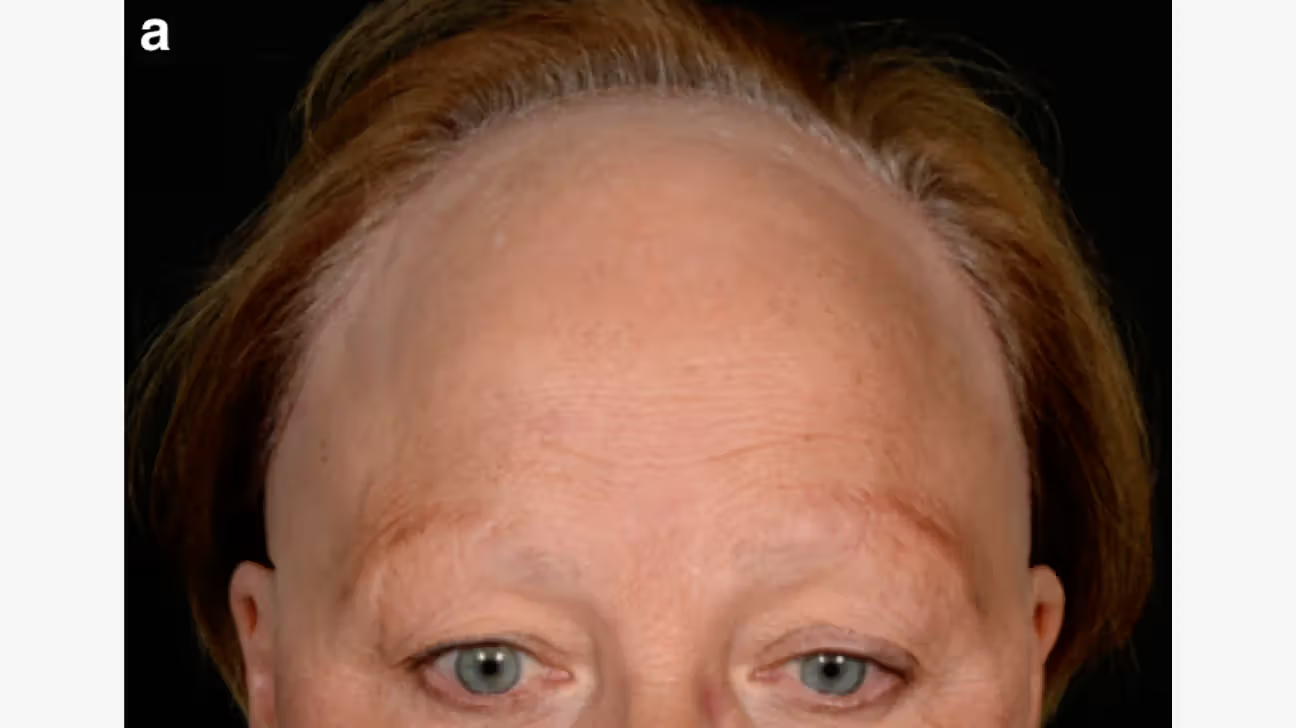
Source: Healthline
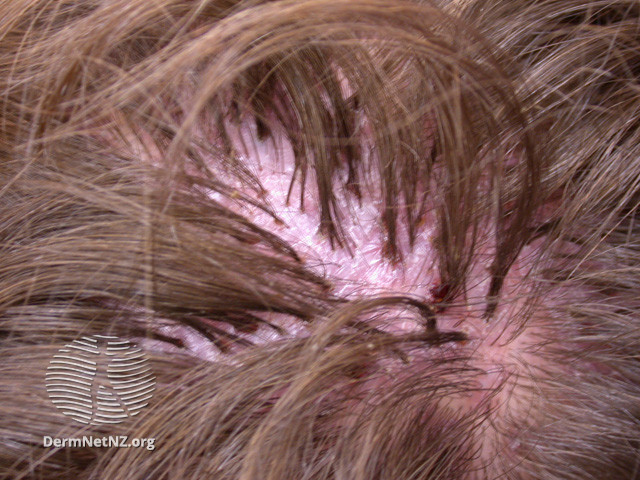
Folliculitis Decalvans
Folliculitis Decalvans (FD) is a cross between alopecia and folliculitis. The precise cause of FD is unknown and it is classified under a form of alopecia known as cicatricial alopecia, or balding with scarring. In FD, hair follicles are destroyed and can no longer produce hairs. There is no single cause of FD, which presents with itching, redness, swelling, and lesions on the scalp that may be itching or contain pus, known as pustules. Hair loss often occurs in oval or round patches and presents on the scalp, arm, face, chest, legs, and pubic regions. This condition is not reversible. There is no cure for FD. Treatment may include photodynamic light therapy and medications to control the symptoms. In some cases the progression of hair loss with FD is possible. Hair Restoration surgery is not always recommended but may be considered in select cases when FD is inactive.
Trichotillomania
Trichotillomania, also called hair-pulling disorder, is a chronic, long-term mental disorder that involves recurrent, irresistible urges to pull out hair from the scalp, eyebrows, or other areas to the body, despite efforts to stop. The cause of trichotillomania is unclear, but like many complex disorders, trichotillomania likely results from a combination of genetic and environmental factors. Trichotillomania presents with hair pulling from the scalp, which often leaves patchy bald spots, which cause significant distress and can interfere with social or work functioning. People with trichotillomania may to go great lengths to disguise the loss of hair. Treatment for trichotillomania is a long term process. Without treatment, symptoms can vary in severity. Those who have gone extended periods of time without pulling from Trichotillomania may be candidates for Follicular Unit Extraction.

